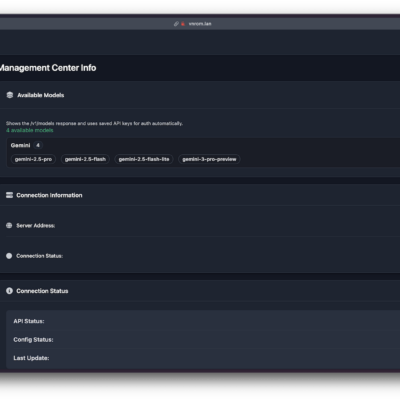How to offer banking services without being a bank? Sounds nothing but fiction. Still, a gazillion fintechs and ecommerce platforms manage to get away with it, not having a banking licence. The answer hides in embedded finance, where non-financial companies embed financial services into their platforms. They use application programming interfaces to connect financial software systems just like virtual bridges. APIs make embedded finance not only possible but also efficient.
How Embedded Finance Drives Additional Revenue
Simply speaking, embedded finance is integration of financial services into non-financial platforms. Commercials don’t need to build financial infrastructure from scratch and carry the legal burden to offer banking, lending, payments, or insurance services. Instead they use embedded finance to allow customers access financial products directly – within their favorite apps. No need for going to a bank or financial institution separately!
Picture ride-hailing apps with payment processing integrated into them such that users do not need to switch services in order to pay. ‘Buy now, pay later’ functionality is offered by lending APIs on online shopping sites. Even healthcare providers use embedded finance to offer financing for medical procedures. This makes payments more affordable for patients.
The primary goal of embedded finance is to ensure convenience and reduce friction in transactions. As a byproduct, companies see additional revenue streams. Businesses earn from transaction fees, interest on embedded lending, or commission on insurance policies sold within their platforms.
APIs and Partnerships Behind Embedded Finance
Embedded finance uses APIs in order to provide seamless financial products. Another API breakthrough advantage is that it provides firms with access to third-party financial service providers. APIs link commercials to financial institutions, payment processors, and fintech firms.
The combination of APIs and partnerships makes embedded finance a flexible solution. Partnerships expand the reach and efficiency of embedded finance. Financials are partnered with by companies to help them utilize regulation-compliant infrastructure. Embedded finance partners also provide fraud protection solutions and risk management solutions. Because companies don’t need to develop these highly complex systems in-house, they save considerable dollars for improving customer experience.
What Are APIs and How Do They Work?
APIs are the unsung heroes of the digital world. Their role is to enable the smooth conversation between user-facing app frontend and the solution on the financial institution’s side. An embedded finance API enables:
- Secure sharing and retrieval of customers’ data.
- Real-time sending of payments and transfers.
- Streamlining cumbersome processes for the sake of saving time.
Embedded finance APIs exist in various forms:
- Open banking APIs. Open banking helps third-party providers of financial software development services based on banks infrastructure. They promote transparency and competition.
- Payment APIs. Name is self-explanatory – they provide payment processing capability to businesses. Payment APIs make commercials capable of accepting various modes of payments.
- Lending APIs. Provide instant credit verification and loan processing capability.
- Insurance APIs. Such integrations provide insurance product embedding into existing platforms.
Embedded Finance Runs on APIs – Here’s Why It Matters
APIs are the bedrock of embedded finance without requiring fundamental infrastructure overhauls. Why are they valuable to business, then? They can be assessed by an array of measurements that gauge their performance, scalability, security, and user impact.
Integrated coherently
This is premised on ease of doing an API with less coding. APIs must be bank- and platform-compatible. Effective APIs must be low latency and low downtime in a bid to support continuous financial transactions. Scaling with a business
APIs need to support greater volumes of transactions without any decrease in their performance. This is especially required as businesses grow. Proper design of APIs makes it possible for new financial products to be introduced without drastic modification to infrastructure. Support for multi-tenancy is also required. Companies need to be able to support multiple users, accounts, and even currencies simultaneously.
Online transactions
The performance of an API is quantified in terms of how fast it processes and its ability to handle large parallel transactions without being overwhelmed. Low-latency processing offers real-time payment, and good failure handling techniques (auto retries or rollbacks, etc.) will ensure transactional consistency in the presence of faults.
Improved customer experience
Improving the customer experience needs APIs that provide seamless and personalized financial services. This is done through capabilities of customization that tailor financial offers according to users’ requirements. Smooth user flow provides for unhampered transactions and interactions without waiting times. Also, APIs need to provide high availability, preferably 99.99% and above, in order to offer round-the-clock access to financial services.
Security and compliance
APIs should ensure secure data exchange through the use of encryption and tokenization to prevent unauthorized usage. Multi-factor authentication and OAuth 2.0 should be used to verify user identities on the basis of strong authentication standards. Other than that, APIs should comply with financial regulations such as PSD2 in Europe, Open Banking in the UK, and global data protection laws such as GDPR and CCPA to uphold legality and ethics of processing financial data.
Data processing
The ability to access financial data and derive insights from it is a key factor to consider. APIs need to provide accurate information in order to help companies make good financial decisions. AI-powered advanced analytics allows the development of predictive insights and improvement of financial products. Real-time logging and API activity monitoring help identify anomalies and improve system stability in the long run.
Business Value of APIs in Embedded Finance
With APIs, businesses are able to access faster innovation, cost savings, financial inclusion, and improved risk management, all of which are essential in a dynamic financial world.
Speed to market. Companies are able to rapidly embed financial services without necessarily building complex infrastructure from scratch. New financial products can be deployed more quickly through existing API solutions. APIs reduce time-to-market and allow companies to stay in front of industry trends.
Cost-effectiveness. Businesses can forego substantial software development leveraging pre-developed financial services. Companies avoid support and regulation compliance expenses while continuing to benefit from ongoing updates and improvements provided by vendors.
Financial inclusion is another advantage brought by API-driven embedded finance. It broadens access to financial services for underbanked segments. Businesses are enabled to provide necessary financial products to individuals and other companies that otherwise have limited access to mainstream banking. This becomes possible thanks to emergence of digital payments, microloans, or alternative credit scoring practices embedded within their platforms.
Improved risk management is accompanied by real-time data access. Risk management mechanisms enable businesses to better detect fraud and improve credit analysis. APIs facilitate real-time verification of financial data. They allow for transaction monitoring and AI-driven risk analysis, reduce fraud exposure and ensure smarter lending decisions.
The Future of APIs in Embedded Finance Is Bright
The system of embedded finance is transforming very fast, with APIs spearheading the innovation wave. As technology advances and market trends shift, there are several key trends that are shaping the future of financial services.
- API-led Banking-as-a-Service platforms. They enable companies to easily integrate banking capabilities. More and more companies in industries are incorporating financial services—digital wallets, lending, and payment processing—without a banking license, enabling new sources of revenue and supporting higher customer engagement.
- The rise of AI-powered APIs. AI will reshape financial decision-making. Artificial intelligence will speed up real-time fraud prevention, enable underwriting automation, and enable hyper-personalized financial services on the basis of unique user behavior. Through increasingly sophisticated machine learning models, businesses will be able to offer more intelligent and foresighted financial products.
- The development of Decentralized Finance. DeFi APIs are also gaining momentum. Blockchain technology provides new opportunities for open, borderless, and automated financial transactions. From decentralized lending to tokenized assets, DeFi APIs will bring finance within reach, less reliant on traditional banking structures.
- More regulatory constructs will shape API-based financial services. Financial regulators and governments will need to enforce stricter compliance mechanisms to offer consumer protection. They will promote fair competition and ensure data security. Regulations such as PSD2, Open Banking, and forthcoming digital asset legislation will keep influencing how APIs are designed and deployed in financial ecosystems.
Embedded finance APIs are upending business models and turning them upside down. Through the use of API-driven embedded finance solutions, you can shape customer experience, create new sources of revenue, and stay competitive in a more fast-paced environment. Balancing innovation with compliance and security will be essential as we move towards a fully integrated financial ecosystem driven by APIs.









